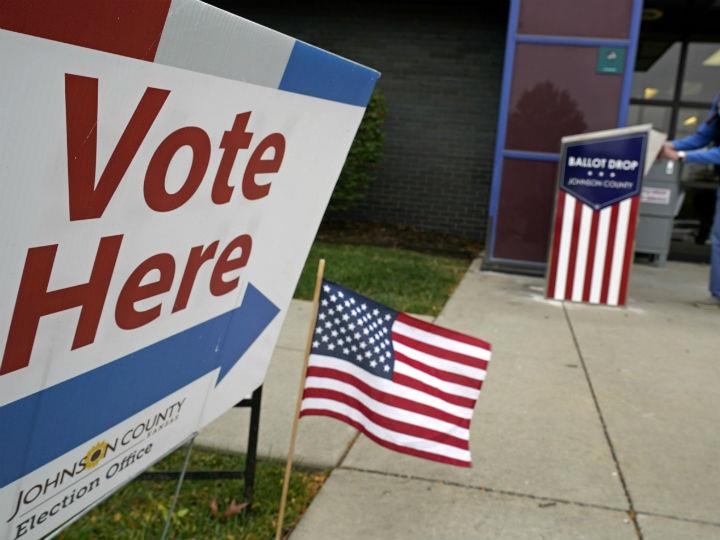by Alexandra Brzozowski and Sarah Lawton
The 2020 US presidential election has been different than any other in history. Here is the rundown of key things to watch out for as the results roll in.
Electoral College
The US Constitution gives the ultimate deciding power in choosing a president to the Electoral College, a body made up of 538 electors from all 50 states (exact number is determined by a state’s population).
They are generally expected to vote for whoever wins the popular vote in their state, although there is nothing in the US constitution binding them to this. The group will meet on 14 December to formally decide the election.
A state will award their votes in the Electoral College to whoever wins the most votes in the state, and a candidate needs 270 electoral votes to win the presidency.
Swing and Bellwether States
However, the adherence to the “winner-take-all” system in the majority of states (except Maine and Nebraska) has created mostly reliable ‘red’ and ‘blue’ states, leaving a few states where presidential elections are close (frequently called swing states or battleground states) to decide the entire election.
In this election, these include the Midwestern states of Pennsylvania, Michigan, and Wisconsin (which had traditionally been Democratic strongholds but narrowly voted for Trump in 2016), Florida (a state with a big electoral prize of 29 votes that has flipped back and forth in the recent past), as well as Arizona and North Carolina (once solid red states that have slowly become more Democratic in recent years).
The campaigns and political pundits will be watching these states, and particularly Pennsylvania, closely to determine the winner. It is no coincidence Biden and Trump are back there last night for a last-ditch campaign effort.
While polls indicate that Biden has multiple routes to victory, Trump’s few paths to 270 are more limited, but his best chance hinges on winning Florida and Pennsylvania. If he wins both states and holds onto North Carolina and Arizona, which he narrowly carried in 2016, and also Georgia and Ohio, which he won in 2016 but is now competitive, he is almost certain to win.
Democrats are also hoping that large voter turnout could push them over the edge in Georgia and Texas, which has also been trending more progressive in recent years but are still considered harder to win than the other swing states.
At the same time, it’s worth to keep an eye at so-called Bellwether States, places like Ohio and Missouri, where voters have proven reliable at choosing the national winner.
Key demographics
There are important groups of people that each candidate has as a part of their coalition and needs to turn out in force to win the White House.
For a Biden win, young people, Black and Latinx voters, and college-educated white voters need to turn out in force. One key group for him according to pollsters are white suburban women, who helped secure Trump’s victory in 2016 and fuelled the Democratic victory in the midterm elections in 2018.
He is also hoping to eat into Trump’s advantage with voters over 65, some of whom have started to turn on the president with the troubled response to the pandemic and perceived ambivalence towards those in risk groups. Any change in these margins could help Biden carry the swing state of Florida, which has a large population of senior citizens.
In contrast, the Republican Party has worked to register non-college-educated white voters, particularly in the rural areas of swing states like Pennsylvania, Michigan, and Wisconsin. Trump has also eaten into some of Biden’s coalition, gaining popularity among some (albeit a relatively small group) of Black and Latino men. If Biden’s margins among these groups decline, it could spell trouble for him, particularly in the battleground states with tight margins.
Counting the votes: A ‘Red Wave’ on Election Night?
Early tallies may be deceptive due in part to more differences between states in reporting as in some states, ballots cast in person on election day will be counted first.
The pandemic has motivated many who would vote in person on election day to instead opt for an absentee ballot (also known as a mail-in ballot). Currently, a record number of people have voted early in the election, more than 95 million as of 2 November, according to the United States Election Project.
With this many ballots coming in via mail and many states still accepting ones that are delivered after election day, the way that states count their ballots will shift the narrative on who is ahead at any given point. Mail-in ballots and early voting across the US is likely to heavily favour the Democrat Joe Biden, while Trump supporters are expected to turn out in force at the polls on 3 November.
Florida will count their early and absentee votes early with those results to be announced around 20:30 EST, but the race will get closer as the rest of the vote is tallied. Arizona, North Carolina, and Georgia are also expected to tally their votes early. In Pennsylvania, officials cannot start to count votes until 3 November, leaving a backlog of mail-in ballots.
The poll tracking website FiveThirtyEight has predicted that there could be a 16 point lead for Trump on election night that over the course of days turns into a Biden victory by 5 points. Michigan has similar rules, and results are not expected until 6 November. The New York Times has compiled a full list of expected state deadlines for results.
In previous elections, around one percent of mailed ballots were rejected, and that figure is expected to rise with the surge of mail-in votes, which could literally mean hundreds of thousands of disputed ballots. Bottlenecks include the under-funded postal service and signature verification.
“We are expecting large delays in outcomes as votes are processed,” Lonna Rae Atkeson, director at the Institute for Social Research, University of New Mexico, told EURACTIV.
Trump’s Election Night Plan
With the likelihood that President Trump will lead in many states on election night, reporting from Axios on Monday (2 November) indicated that Trump plans to prematurely declare victory on Tuesday before all the votes are counted.
“President Trump has told confidants he’ll declare victory on Tuesday night if it looks like he’s ‘ahead,’ according to three sources familiar with his private comments,” it states, although it also noted that he denied this to reporters on Sunday (1 November).
Trump has long been setting the stage for a potential challenge to mail-in ballots that are tabulated after election day, baselessly claiming that it is evidence of election fraud. “Mail-in ballots are very dangerous. There’s tremendous fraud involved and tremendous illegality,” he said at a rally in May.
Repeated studies have debunked the president’s claims of widespread voter fraud. A 2017 report from the Brennan Center for Justice estimated that the rate was actually between 0.00004% and 0.0009%. “A look at the facts makes clear fraud is rare, and does not happen on a scale even close to necessary to ‘rig’ an election,” the report claims.
Democrats have promised to fight this. In a statement to Axios, Senator Bernie Sander said that “it comes as no surprise that Trump and his campaign plan to declare victory before all the votes are counted. That has been his strategy for months, and nobody should fall for it. … We will not allow that to happen. Every vote must and will be counted.”
When will we know for sure?
With the time needed to count a large number of mail-in votes, some states may not be able to predict a winner on election night. However, this could be circumvented in the event of a landslide election for either candidate, although most experts claim this to be unlikely. One of the most likely possibilities is an early Biden victory in Florida, which would cut off the majority of Trump’s possible paths to victory.
One more far-fetched example that Democrats are currently hoping for is the long-time dream of Texas (and its 38 electoral votes) flipping to the Democrats, which would be a sign of a landslide win for Biden. The party has put a lot of money and volunteers into the state, and some recent polls have shown the two running neck and neck.
If the results hinge on one or two swing states (Pennsylvania is seen as the most likely ‘tipping point’), it could be a few days or even a week after if it’s close enough for a recount. However, “even if we don’t have a winner on election night, that doesn’t mean we won’t have a pretty good idea,” FiveThirtyEight has noted in their election night guide.
Plus, there could be legal disputes which will add to the uncertainty and could mean the Supreme Court to play a part as in 2000 with Bush v Gore.
The new president is officially sworn into office on 20 January.
*first published in: www.euractiv.com




 By: N. Peter Kramer
By: N. Peter Kramer
